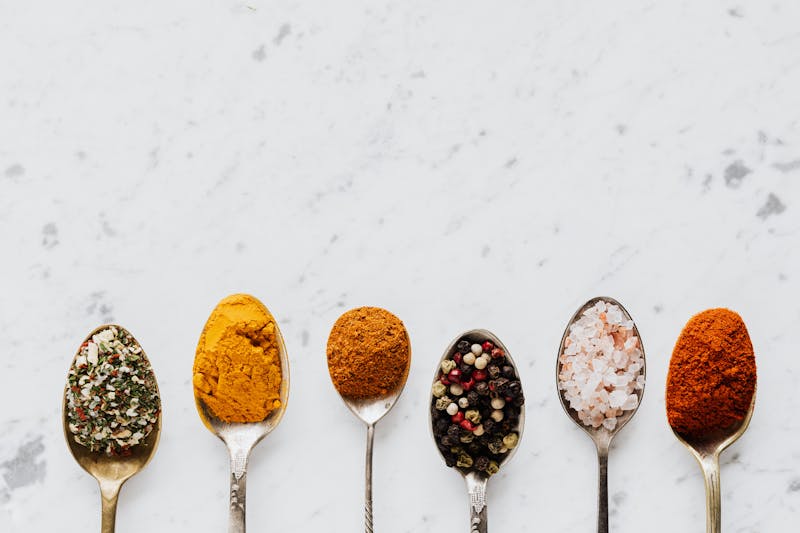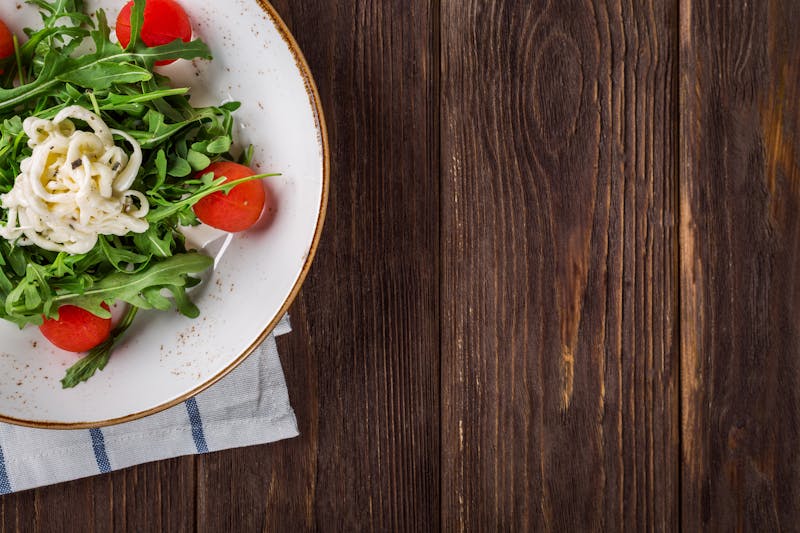H1: Sugar-Free Desserts: Tasty Alternatives for a Healthier Sweet Tooth
We’ve all been there—standing in front of the dessert aisle or browsing a menu, craving something sweet but feeling guilty about the sugar overload. It’s no surprise that sugar has become a dietary villain. From weight gain to energy crashes, it’s clear that reducing sugar can be a good move for your health. But what about satisfying that sweet tooth? Luckily, sugar-free desserts are the perfect solution. In this article, we’ll explore why sugar-free desserts are gaining popularity, how they can fit into a healthy lifestyle, and share some mouth-watering alternatives to your traditional sugary treats.
H2: Introduction
As health-conscious consumers increasingly look for ways to reduce their sugar intake, the demand for sugar-free desserts has skyrocketed. While many people turn to these treats for health reasons, others simply want a way to indulge without the negative effects of sugar. Sugar-free doesn’t have to mean flavor-free, though. In fact, with the right ingredients and techniques, sugar-free desserts can be just as delicious, if not more so, than their sugary counterparts. In this article, we’ll break down what makes a dessert truly sugar-free, share some creative ideas, and answer common questions around these treats.
H3: Why Sugar-Free Desserts Are Gaining Popularity
With more research highlighting the negative effects of sugar, especially added sugars, people are becoming more mindful of their consumption. Sugar contributes to a variety of health issues, from obesity and diabetes to heart disease and skin problems. This has prompted a rise in the popularity of sugar-free alternatives that still allow us to enjoy the pleasures of dessert without the associated health risks. The shift towards healthier living has made sugar-free desserts not just a trend, but a lifestyle choice for many.
H3: The Benefits of Reducing Sugar in Your Diet
Reducing sugar intake is beneficial for more reasons than one. First, cutting back on sugar can help stabilize your blood sugar levels, which is crucial for managing energy levels and preventing insulin spikes. Second, reducing sugar helps improve skin health, as high sugar consumption has been linked to acne and early signs of aging. Moreover, eliminating sugar can contribute to weight loss and reduce the risk of chronic conditions like heart disease and type 2 diabetes.
H2: What Makes a Dessert Sugar-Free?
A sugar-free dessert, at its core, avoids the use of refined sugars like white sugar, brown sugar, or syrups that are commonly used to sweeten traditional desserts. Instead, sugar-free options rely on natural or artificial sweeteners to provide sweetness without the calories or negative health impacts of sugar.
H3: Sugar Substitutes: The Key to Sugar-Free Desserts
There’s no single magic ingredient that makes a dessert sugar-free. Instead, it’s the careful use of sugar substitutes that make these treats both sweet and satisfying. Some common substitutes include stevia, monk fruit, and erythritol, all of which can mimic the taste of sugar without the harmful effects. The key is to use the right combination to match the flavor and texture of traditional sugar while keeping the dessert healthy.
H3: Natural Sweeteners vs. Artificial Sweeteners
When it comes to sugar-free desserts, sweeteners come in two primary categories: natural and artificial. Natural sweeteners, like stevia and monk fruit, are derived from plants and often come with little to no calories, making them ideal for those seeking a healthier alternative. Artificial sweeteners, like aspartame and sucralose, may be low-calorie but have been linked to various health concerns. While both can serve the same function, many prefer natural sweeteners for their perceived health benefits.
H2: Tasty Sugar-Free Dessert Ideas
Now that we know what makes a dessert sugar-free, let’s explore some exciting, easy-to-make dessert ideas that can satisfy your cravings without the sugar overload.
H3: Low-Carb, Sugar-Free Cakes
H4: Almond Flour Chocolate Cake
This rich, moist chocolate cake uses almond flour as the base, offering a low-carb, gluten-free alternative to traditional flour. Sweetened with stevia or erythritol, this cake is the perfect indulgence without the sugar crash.
H4: Keto Cheesecake with a Nut Crust
This keto-friendly cheesecake swaps out the sugar and heavy crust for a delicious combination of cream cheese, almond flour, and monk fruit. It’s decadently creamy and perfectly sweetened, making it a guilt-free way to satisfy your cheesecake cravings.
H3: Sugar-Free Ice Cream Alternatives
H4: Avocado Chocolate Mousse
If you’re craving something creamy, this avocado-based chocolate mousse is an excellent choice. Blended with cocoa powder, stevia, and a dash of vanilla, this dessert is rich, silky, and provides healthy fats that will leave you feeling full and satisfied.
H4: Coconut Milk Popsicles
For a refreshing treat, try making coconut milk popsicles. With just a few ingredients—coconut milk, stevia, and vanilla extract—you can create a creamy, sugar-free frozen dessert that’s perfect for hot days.
H3: Sugar-Free Cookies
H4: Peanut Butter Almond Flour Cookies
These cookies are perfect for anyone on a low-carb or gluten-free diet. Made with almond flour and sweetened with stevia, they offer all the rich flavor of peanut butter without the sugar overload.
H4: Oatmeal Raisin Cookies with Stevia
Love oatmeal raisin cookies but want to skip the sugar? These sugar-free oatmeal cookies use stevia as a sweetener and are packed with fiber from the oats, making them a healthier alternative to traditional recipes.
H2: How to Customize Your Sugar-Free Desserts
One of the best things about sugar-free desserts is how easily they can be customized to fit your preferences and dietary needs. Here are a few tips for making them even better.
H3: Flavor Variations and Mix-ins
Get creative with your desserts by adding mix-ins like berries, nuts, or sugar-free chocolate chips. A little cinnamon, vanilla, or lemon zest can also elevate the flavor profile and add complexity to your treats.
H3: Adjusting Texture for Better Results
Texture can make or break a dessert. If you find that your sugar-free desserts are too dry or too dense, try adjusting the ingredients. Adding a bit of yogurt or coconut oil can help improve the moisture, while incorporating more eggs can make the texture fluffier.
H2: Common Myths About Sugar-Free Desserts
As with any food trend, there are a lot of misconceptions surrounding sugar-free desserts. Let’s tackle some of the most common myths.
H3: Sugar-Free Equals Flavor-Free
One of the biggest myths about sugar-free desserts is that they don’t taste good. In reality, when made with the right sweeteners and flavorings, sugar-free desserts can be just as flavorful, if not more so, than traditional desserts.
H3: Sugar-Free Desserts are Only for Diabetics
While sugar-free desserts are often recommended for people with diabetes, they’re not just for that demographic. Anyone looking to reduce their sugar intake or enjoy a healthier dessert option can benefit from these treats.
H2: Conclusion
Sugar-free desserts are a fantastic way to satisfy your sweet cravings while maintaining a healthier lifestyle. With the right ingredients and a little creativity, you can make desserts that are as delicious as they are nutritious. Whether you’re trying to reduce sugar, cut back on carbs, or simply enjoy a guilt-free treat, these sugar-free alternatives are here to help.

H2: FAQs
H3: Are sugar-free desserts really healthy?
Yes! When made with natural sweeteners and healthy ingredients, sugar-free desserts can be a great choice for your health. They can help reduce your overall sugar intake and prevent the negative effects of excess sugar consumption.
H3: Can I use honey or maple syrup in sugar-free desserts?
While honey and maple syrup are natural sweeteners, they still contain sugar and calories. If you’re aiming for a truly sugar-free dessert, it’s better to stick to alternatives like stevia, monk fruit, or erythritol.
H3: How can I make sugar-free desserts taste less artificial?
To enhance the flavor of sugar-free desserts, try adding vanilla extract, cinnamon, or citrus zest. These natural flavorings can help mask the aftertaste that some artificial sweeteners may leave behind.
H3: What are the best natural sweeteners for baking?
The best natural sweeteners for baking are stevia, monk fruit, and erythritol. These sweeteners have little to no calories and won’t spike your blood sugar, making them ideal for sugar-free baking.
H3: Can sugar-free desserts be part of a weight-loss plan?
Yes! Sugar-free desserts can be an excellent part of a weight-loss plan, especially when made with low-carb, nutrient-dense ingredients. Just be mindful of portion sizes, as even sugar-free desserts can be calorie-dense.

